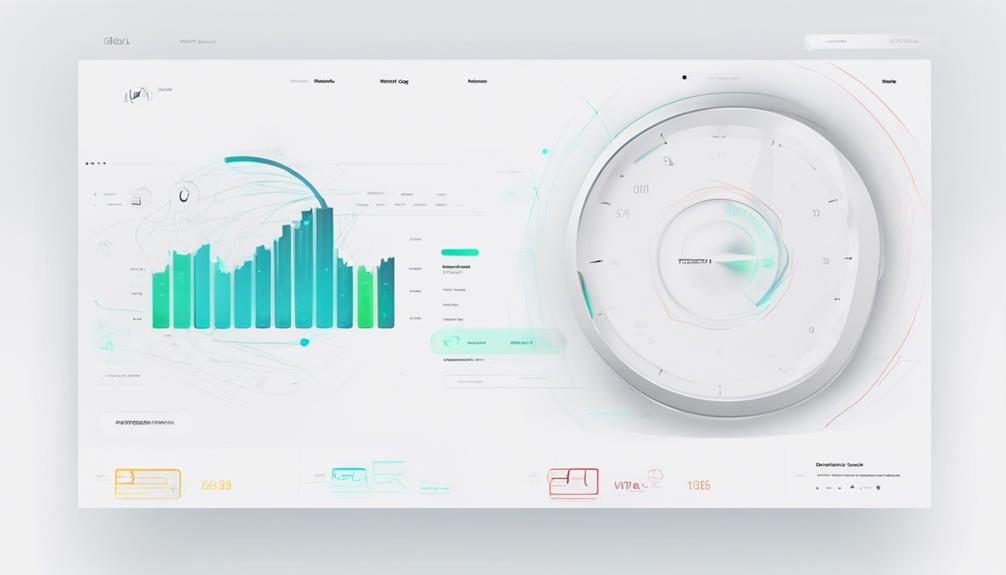When you embark on an SEO audit, boosting your website's speed should be a top priority. It's not just about ticking a box; faster load times can significantly enhance user experience and improve your search engine rankings. Have you considered how optimizing images or leveraging a Content Delivery Network could impact your site's performance? These strategies, among others, can transform your website's speed, leading to higher conversion rates and increased user satisfaction. Curious about how you can implement these changes effectively and see tangible results? Let's explore the steps and tools that can make a difference.
Key Takeaways
- Optimize images and media by reducing file sizes and implementing lazy loading.
- Minimize HTTP requests by combining and inlining CSS and JavaScript files.
- Leverage browser caching to store static resources locally, reducing server requests.
- Utilize a Content Delivery Network to disperse content across geographically distributed servers.
- Analyze current load times using tools like Google PageSpeed Insights to identify improvement areas.
Analyze Current Load Times
A critical step in your SEO audit involves analyzing current load times to ensure your website is optimized for both users and search engines.
Start by utilizing tools like Google PageSpeed Insights or GTmetrix to gather data on your website's performance. These tools provide you with key metrics such as First Contentful Paint (FCP) and Time to Interactive (TTI), which are crucial for understanding how quickly users can engage with your content.
Analyze these metrics strategically. An FCP of less than 2 seconds is ideal, indicating that your site is loading efficiently. Meanwhile, a TTI under 5 seconds suggests that users won't face delays when interacting with your site.
You should also look at the Total Blocking Time (TBT) to identify any delays caused by heavy scripts or third-party integrations.
Next, compare your site's performance against industry benchmarks or competitors to identify areas for improvement.
Prioritize issues that have the most significant impact on load times. By doing so, you're not only enhancing user experience but also meeting search engine expectations for fast, responsive websites.
Ultimately, a thorough load time analysis leads to strategic decisions that boost your SEO performance.
Optimize Images and Media
Optimizing images and media is a fundamental component of enhancing website speed and SEO performance. Start by analyzing your site's current media usage with tools like Google PageSpeed Insights. These tools provide data-driven insights into how media files impact load times.
Focus on reducing file sizes without sacrificing quality. Use formats like JPEG for photographs, PNG for graphics with transparent backgrounds, and WebP for high compression efficiency.
You should also implement lazy loading, which strategically delays the loading of images and media until they appear in the user's viewport. This reduces initial load times and bandwidth usage.
Furthermore, leverage browser caching to store frequently accessed media locally on users' devices, minimizing repeated server requests.
Don't neglect the importance of descriptive alt text and file names packed with relevant keywords. This enhances search engine indexing and improves accessibility.
Also, consider using a content delivery network (CDN) to distribute media files across multiple servers geographically closer to users, which cuts down latency.
Minimize HTTP Requests

Enhancing website speed extends beyond optimizing images and media; minimizing HTTP requests is another strategic move you should consider.
Every time a browser fetches a file from your server, it initiates an HTTP request. The more requests your site requires, the longer it takes to load. By reducing the number of requests, you can significantly enhance loading times, which is pivotal for SEO performance and user experience.
Begin by conducting an audit of your site's resources using tools like Google PageSpeed Insights or GTmetrix. These tools provide data on the number of HTTP requests your site produces.
Analyze this data to identify unnecessary elements, such as redundant scripts or stylesheets, that could be consolidated or removed.
Strategically combine CSS and JavaScript files, as each file represents a separate HTTP request. Inline small CSS and JavaScript to cut down requests further.
Additionally, scrutinize third-party plugins and widgets. Each plugin adds to your HTTP request count, so ensure they're absolutely necessary for your site's functionality.
Leverage Browser Caching
When it comes to improving website speed, leveraging browser caching is a powerful technique that reduces load times by storing static resources locally on a user's device. This method minimizes the need for repeated server requests, allowing users to access your site more quickly on subsequent visits. By strategically setting cache-control headers, you can define how long browsers should store files like images, CSS, and JavaScript. This not only enhances user experience but also positively impacts your SEO rankings.
To implement browser caching effectively, consider the following data-driven strategies:
| Resource Type | Typical Cache Duration | Strategic Benefit |
|---|---|---|
| Images | 1 year | Reduced server load |
| CSS/JS Files | 1 month | Faster page rendering |
| HTML Files | 1 hour | Frequent content updates |
Implement Content Delivery Network

A critical step in boosting website performance is implementing a Content Delivery Network (CDN). A CDN strategically disperses your content across multiple geographically distributed servers, ensuring that users access data from the server closest to them. This reduces latency and load times, crucial factors in retaining users and improving search engine rankings.
Studies show that a one-second delay in load time can lead to a 7% decrease in conversions. Thus, a CDN can directly influence your bottom line.
When you implement a CDN, you're not just enhancing speed; you're optimizing resource allocation. By offloading bandwidth to external servers, your origin server experiences less strain, leading to improved performance.
Moreover, CDNs offer additional features like DDoS protection, which secures your site against potential threats, and SSL acceleration, which boosts security without compromising speed.
Incorporating a CDN requires strategic evaluation of your current traffic patterns and geographical user distribution. Choose a CDN provider with a robust network architecture and server locations aligned with your audience demographics.
Conclusion
By focusing on these strategic optimizations, you can significantly enhance your website's speed, directly improving SEO performance and user experience. Analyze current load times with tools like Google PageSpeed Insights to identify bottlenecks. Optimize images and media, minimize HTTP requests, and leverage browser caching to streamline loading processes. Implement a CDN for global content distribution. These data-driven strategies not only boost search rankings but also enhance conversion rates and user satisfaction, ultimately driving your digital success.


Leave a Reply